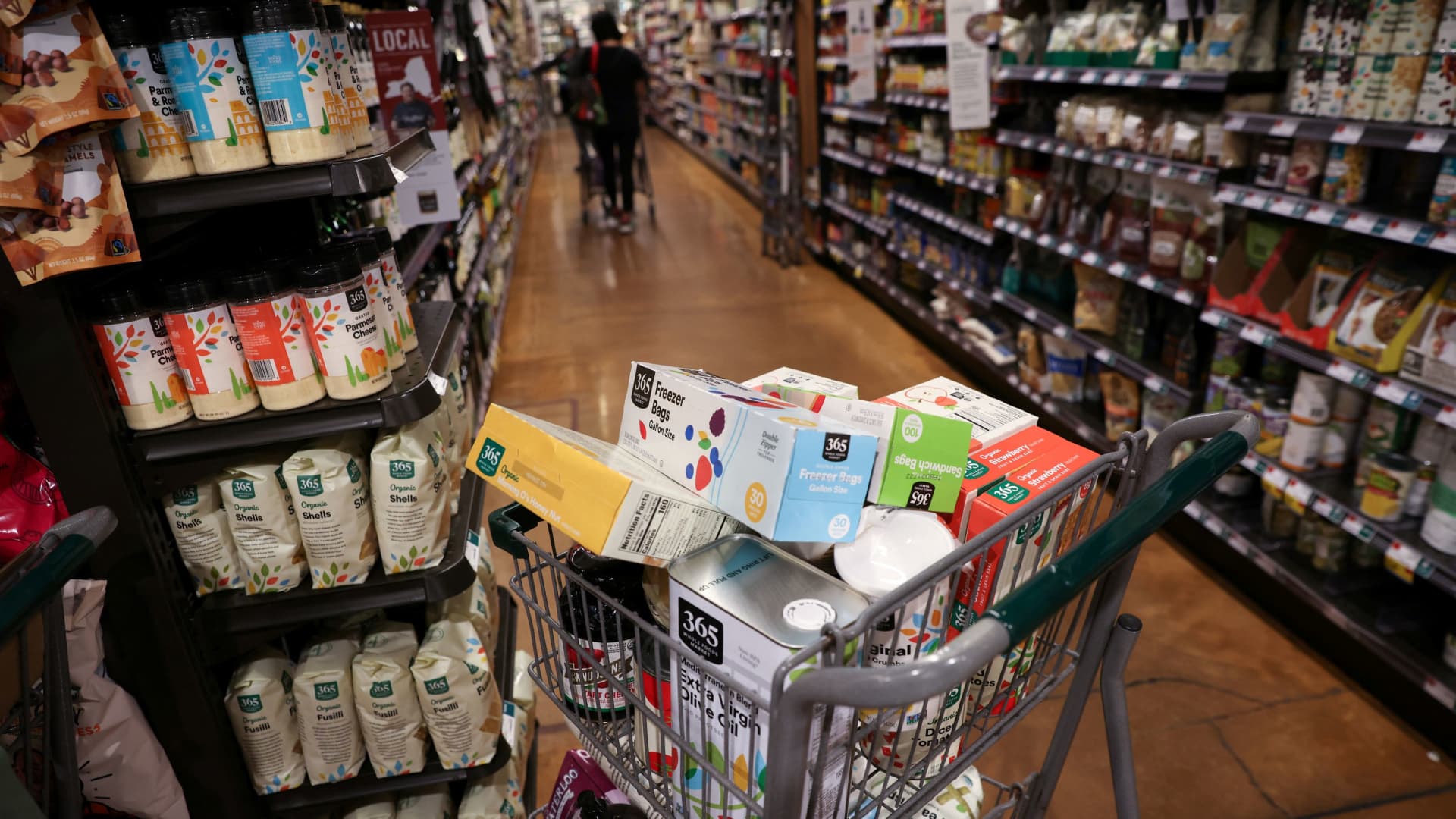If inflation has been the biggest threat to U.S. economic growth, then July’s data should provide signs that there’s at least some relief in the pipeline.
Prices were flat for the month as gauged by the items that the Bureau of Labor Statistics tracks for its consumer price index. That marked the first time the aggregate measure hadn’t posted a month-over-month increase since May 2020, when the widely followed measure showed a modest decline.
Just a month ago, CPI posted its fastest 12-month gain since November 1982, following a trend that helped send economic growth into contraction for the first half of the year, stirring up talk of a recession.
But with at least the short-term trend indicating the rate of price increases is abating, economic optimism is perking up.
No recession, for now
“The whole recession narrative really needs to be put on a shelf for now,” said Aneta Markowska, chief economist at Jefferies. “I think it’s going to shifting to a stronger-for-longer narrative, which is really supported by a reversal in inflation.”
Markowska, whose forecasts this year have been accurate, sees solid growth in the near term, including a 3% growth rate in the third quarter. The Atlanta Federal Reserve’s GDPNow gauge, which tracks economic data in real time, pointed to a 2.5% growth rate in a Wednesday update, up 1.1 percentage points from its last one on Aug. 4.
However, Markowska also expects pressures to intensify in 2023, with a recession likely in the back part of the year.
Indeed, there was a little bit for both arguments in the CPI report.
Most of the tempering in inflation came because of a fall in energy prices. Gasoline slid 7.7%, the biggest monthly decline since April 2020. Fuel oil tumbled 11% as energy-related commodity prices were off 7.6%.
Transportation services cost increases also came off the boil, with airline fares tumbling 7.8% to reverse a trend that has seen tickets surge 27.7% over the past year.
But there were few other signs of inflation declines in the report, with food costs particularly high. The food index, in fact, rose 1.1% on the month, and its 10.9% pace over the past 12 months is the highest since May 1979.
That’s causing worries at places such as City Harvest, which helps feed needy New Yorkers who have been hit especially hard by price surge that began last year.
“We’re seeing many more children come into food pantries,” said Jilly Stephens, the organization’s CEO. “Food insecurity had been intractable even before the pandemic hit. Now we’re seeing even more people turn to food pantries because of the rising prices.”
Stephens said the number of children seeking food assistance about doubled a year after the Covid pandemic hit, and the organization is struggling to keep up.
“We’re always optimistic, because we are supported by incredibly generous New Yorkers,” she said.
People keep spending
Despite the surging prices, consumers have been resilient, continuing to spend even with inflation-adjusted wages contracting 3% over the past year.
Jonathan Silver, CEO of Affinity Solutions, which tracks consumer behavior through credit and debit card transactions, said spending is at a healthy pace, rising about 10.5% over the past year, though inflation is influencing behavior.
“When you start to look at specific categories, there’s been a lot of shifting in spending, and as a result, some categories are being impacted more than others by inflation,” he said. “People are delaying their spending on discretionary items.”
For instance, he said department store spending has fallen 2.4% over the past year, while discount store spending has risen 17%. Amusement park spending is down 18%, but move theaters are up 92%. Some of those numbers are influenced by rising prices, but they generally reflect the level of transactions as well.
As inflation eases, Silver expects discretionary spending to increase.
“We believe there will be a spike later in the year that will create an upward slope to the spending in key categories where the consumer has been delaying and deferring spending,” he said. “Consumers may get a holiday present of some relief on food prices.”
In the meantime, the year-over-year inflation pace is still running at 8.5%. That’s just off the most aggressive rise in 40 years and a “worryingly high rate,” said Rick Rieder, chief investment officer of global fixed income at asset management giant BlackRock.
At the center of worries about global growth is the Federal Reserve and concerns that its interest rate hikes aimed at controlling inflation will slow the economy so much that it will fall into recession.
Following Wednesday’s report, traders shifted their bets to expecting the Fed to hike just half a percentage point in September, rather than the previous trend toward 0.75 percentage points, a move that Rieder said could be mistaken.
“The persistence of still solid inflation data witnessed today, when combined with last week’s strong labor market data, and perhaps especially the still solid wage gains, places Fed policymakers firmly on the path toward continuation of aggressive tightening,” he wrote.
